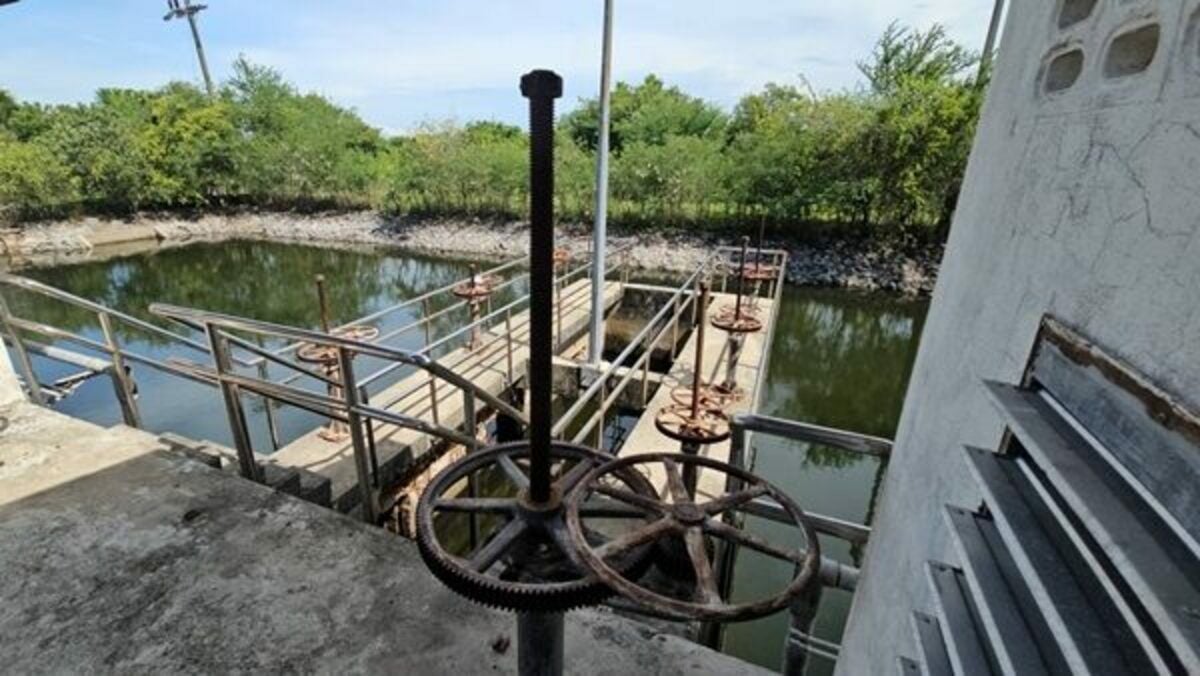Abandoned 2.5 billion baht wastewater site becomes drug hub

A wastewater treatment facility worth over 2.5 billion baht has been found abandoned, becoming a breeding ground for blackchin tilapia and a hotspot for drug activity.
Located in Tha Phaya, Pak Phanang district, Nakhon Si Thammarat, the facility is part of a larger project aimed at managing saline water for shrimp farming.
The Tha Phaya site consists of four buildings, all stripped of electrical equipment and components, rendering its 12 treatment ponds inoperative. These ponds have now become habitats for blackchin tilapia and areas for drug use.
Krahan, a local shrimp farmer from Tha Phaya, Pak Phanang, explained that the project originated from a study tour to Chanthaburi Province around 20 years ago. Unfortunately, construction issues led to its abandonment, and Krahan is urging the government and relevant organisations to investigate and find ways to make it functional again.
Deputy village headman of Tha Phaya, Kosol Panjara, noted that the facility was operational for only one to two years before continuous problems arose. The area falls within a royal initiative project zone for saline water management.
Despite initial compliance from local farmers who have been farming black tiger shrimp and whiteleg shrimp, the saline water management system never materialised, leaving the community in distress.
The project, initiated in 2003 by the Department of Fisheries, was called the Development Project for the Pak Phanang River Basin under the Royal Initiative. It aimed to create a saline water system for sea shrimp farming, with a total cost of 2,592,408,905 baht, based on Thai currency values in 2002.
Chalermsak Ketmeun, the provincial fisheries officer of Nakhon Si Thammarat, stated that the project was designed to channel seawater into the saline irrigation zone for shrimp farming. The wastewater generated from shrimp farming was supposed to be treated by the system.
There was an agreement for farmers to share the electricity costs: the government would cover 75% in the first year, 50% in the second year, and 25% in the third year, with farmers taking over completely by the fourth year.
However, non-payment of these costs led to the cessation of operations due to budget constraints and the inability to transfer management to local authorities, reported KhaoSod.
Latest Thailand News
Follow The Thaiger on Google News:


























